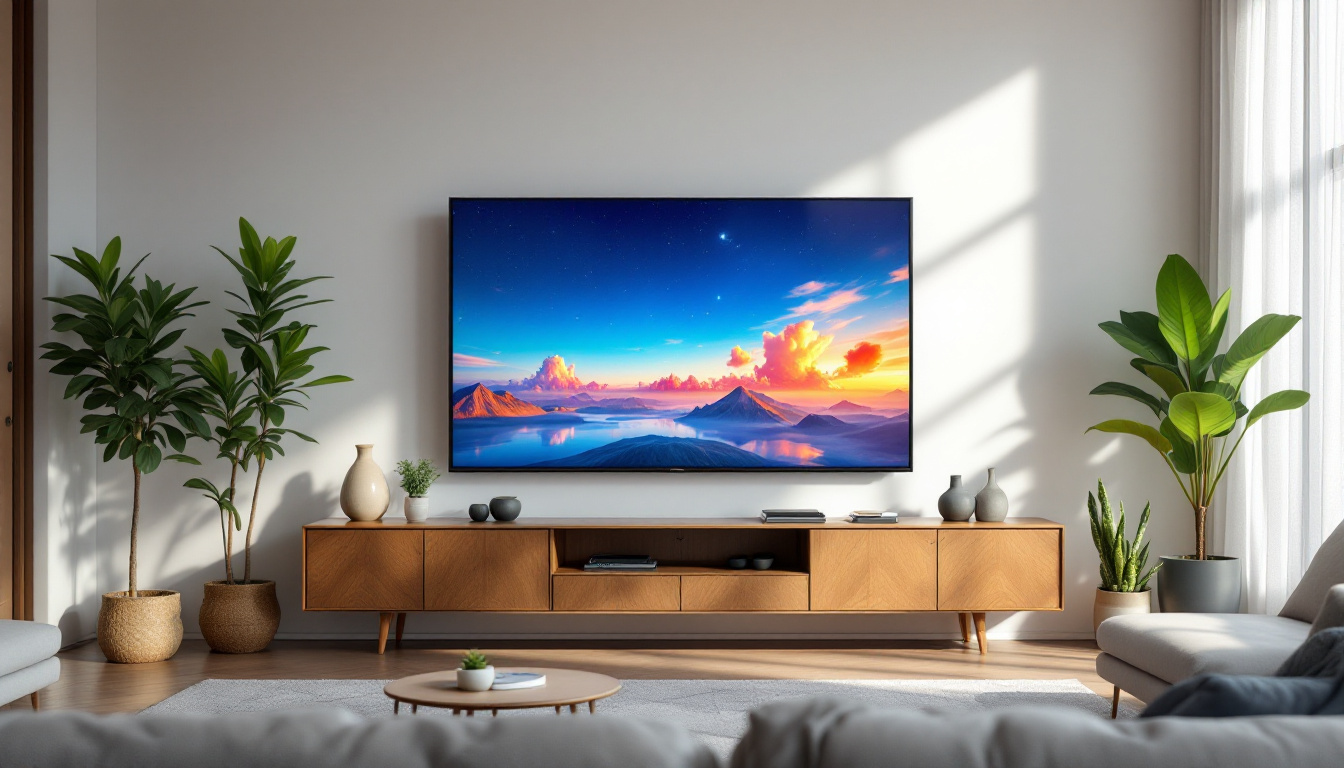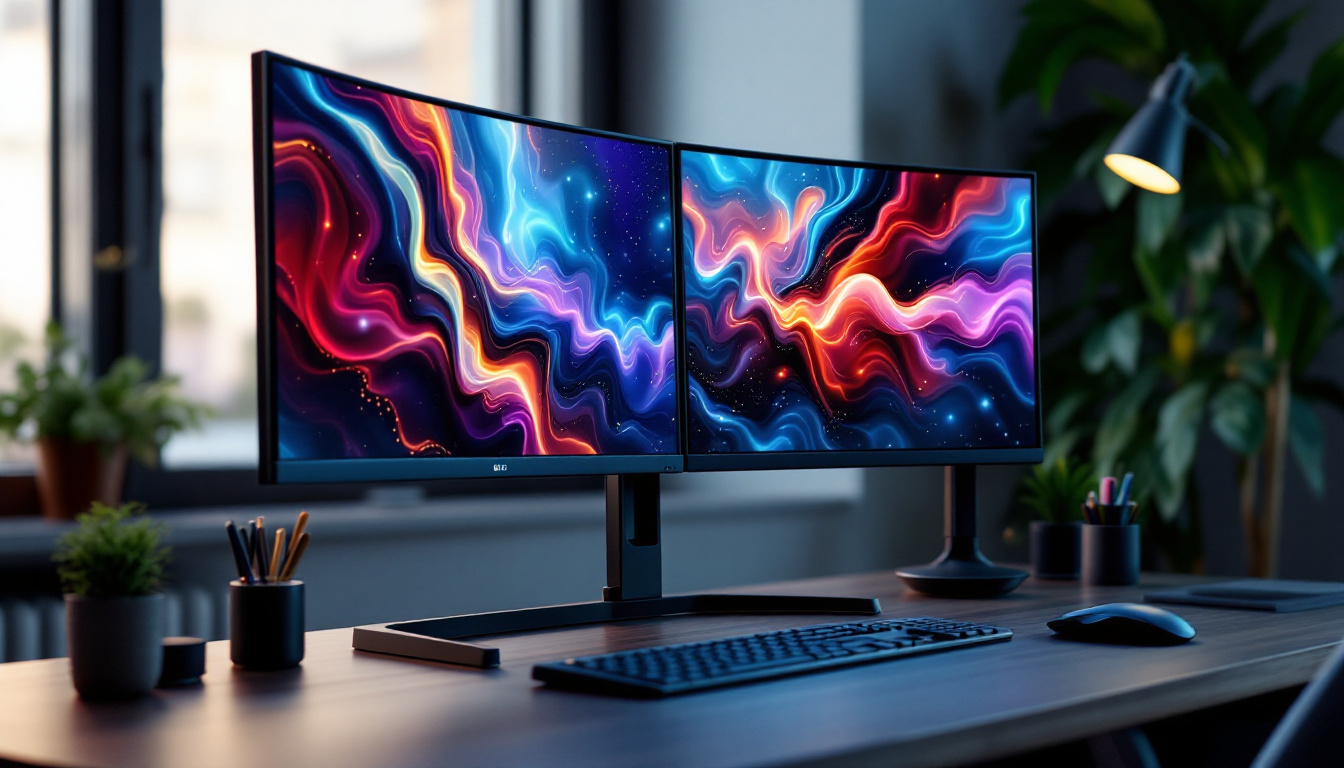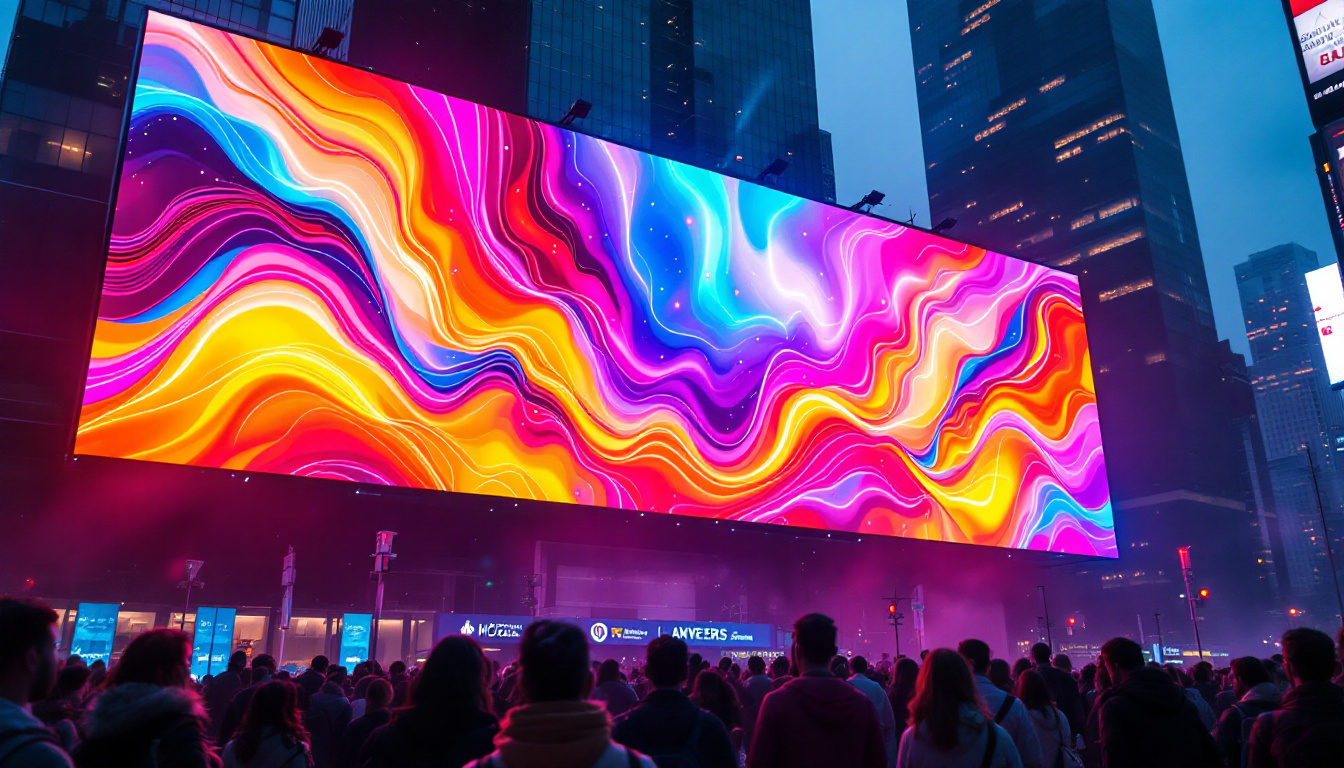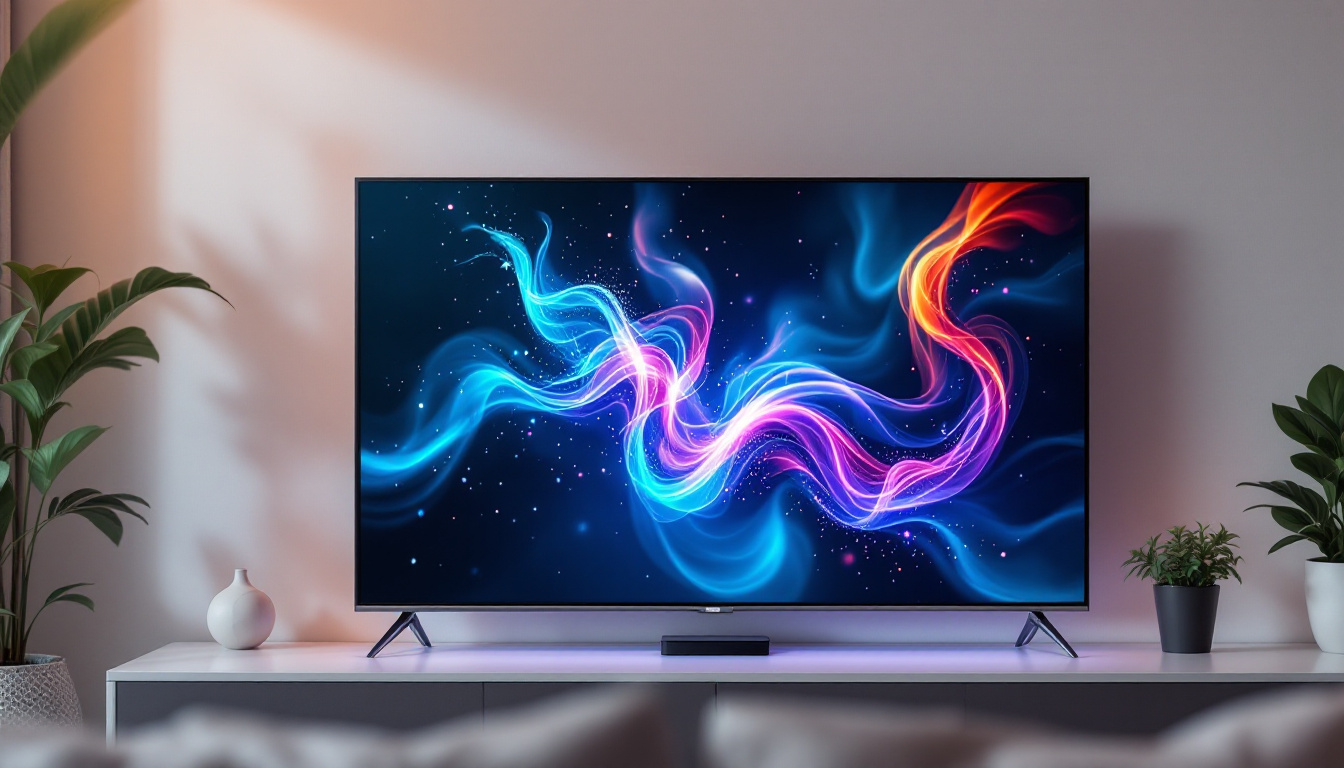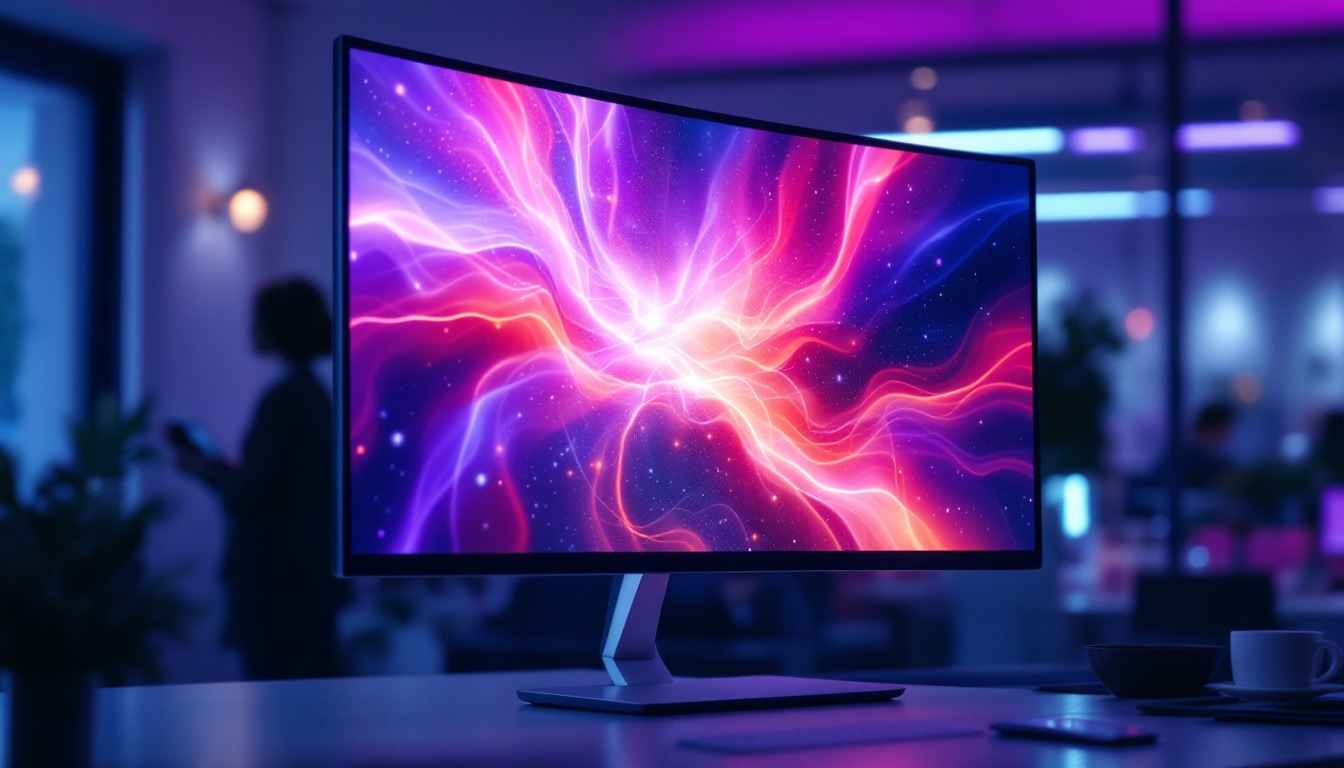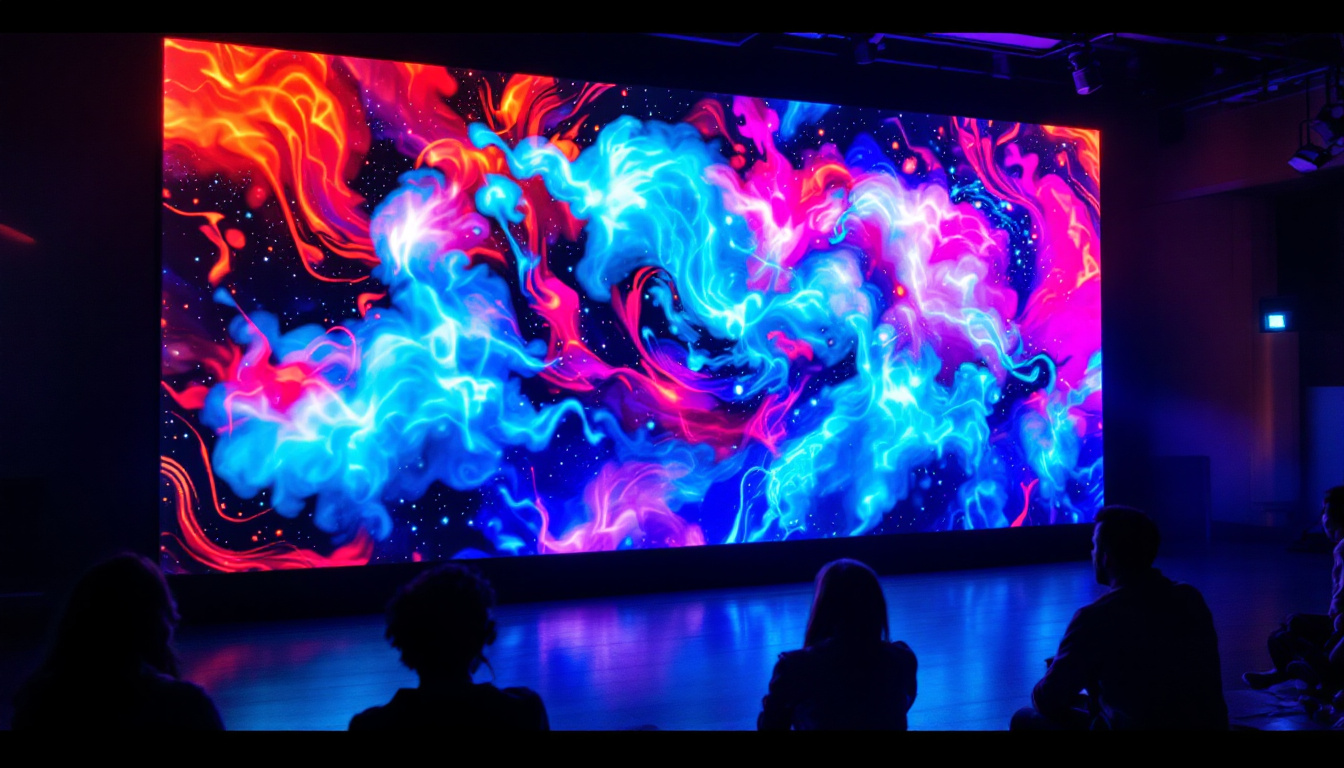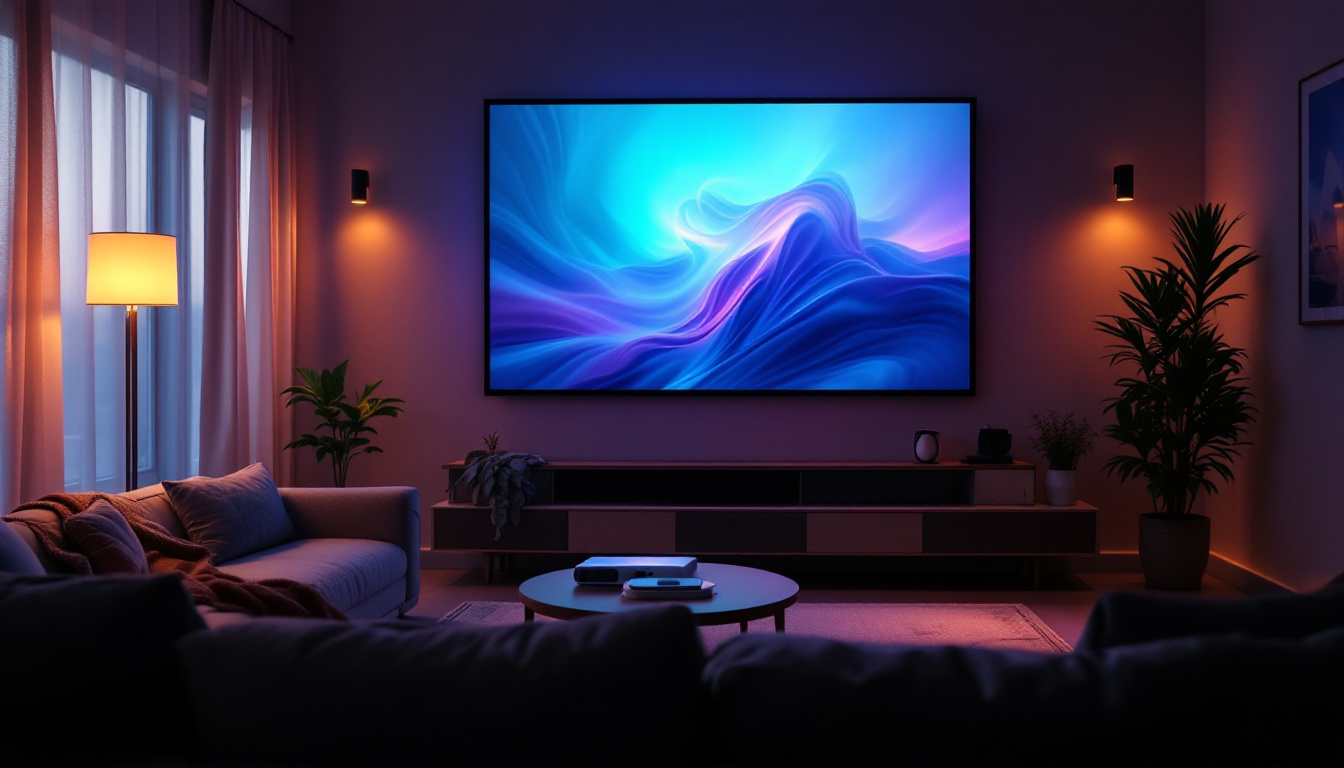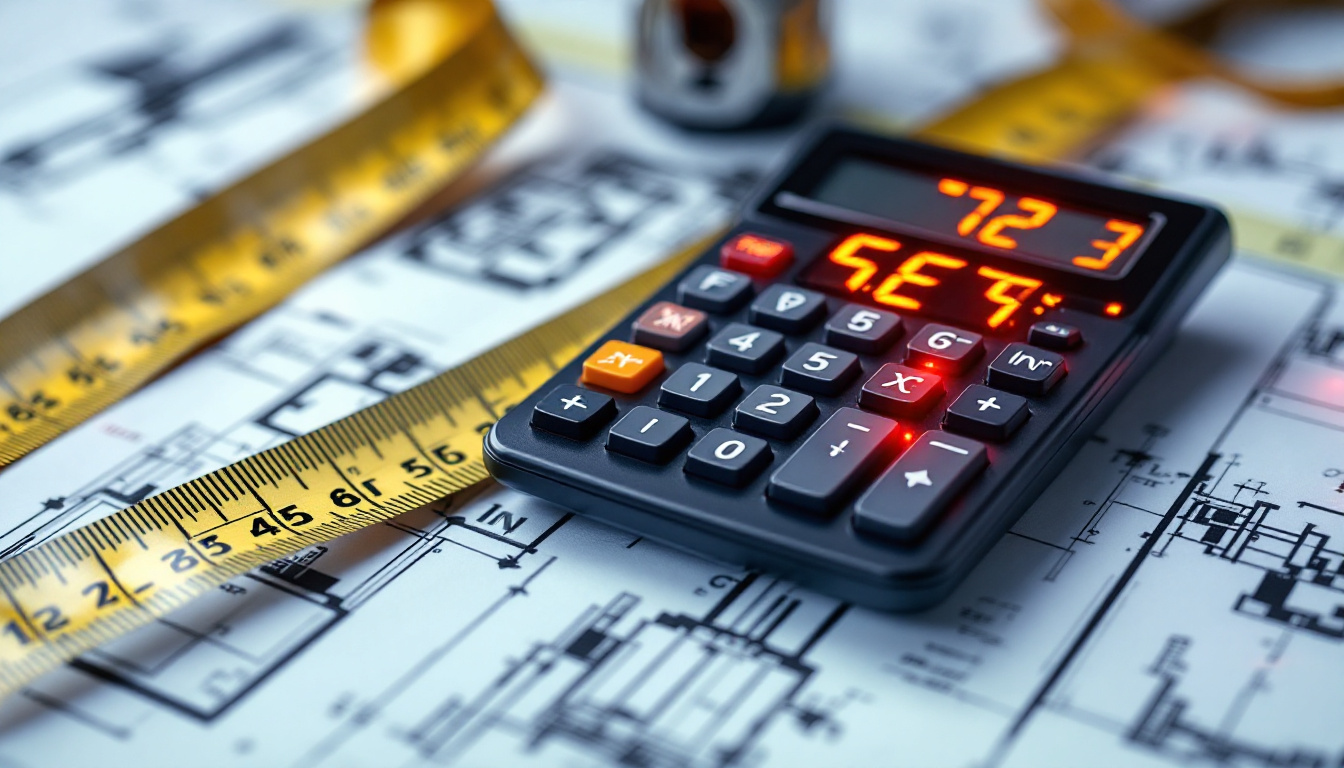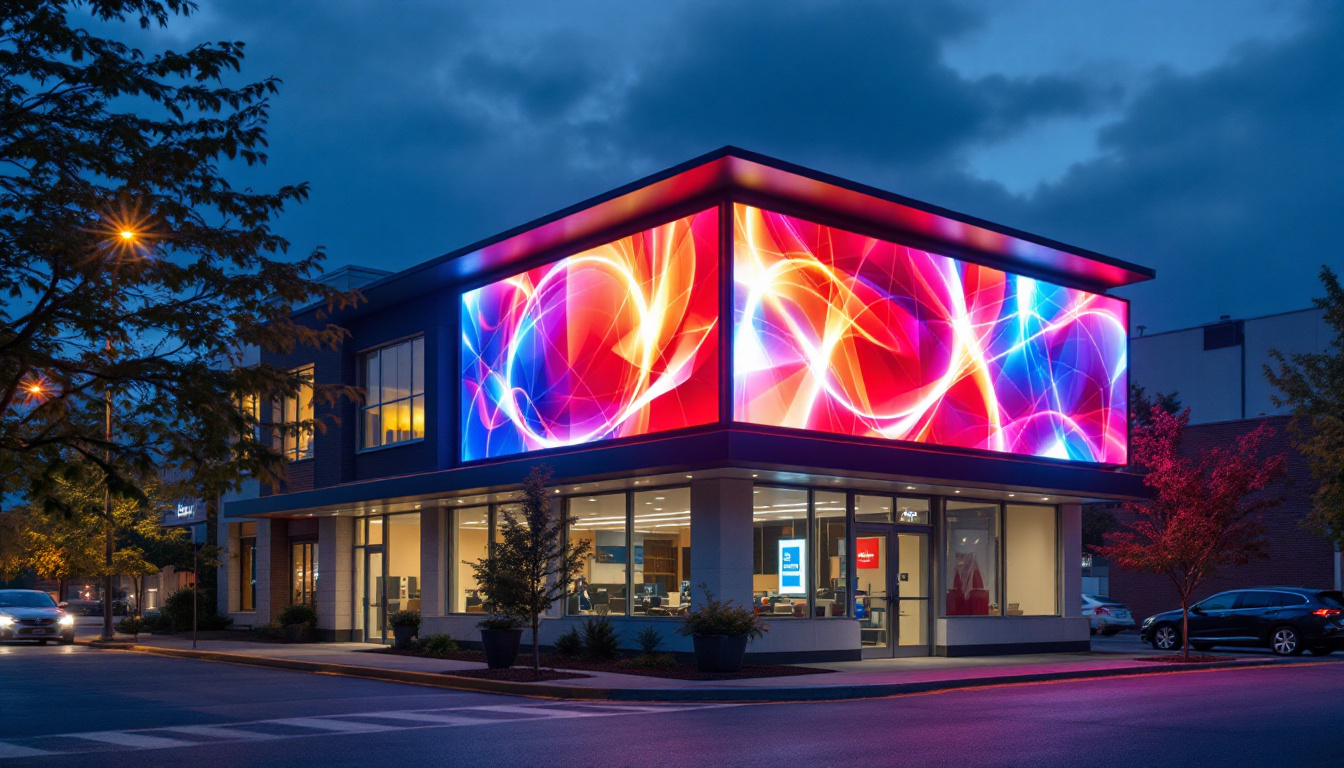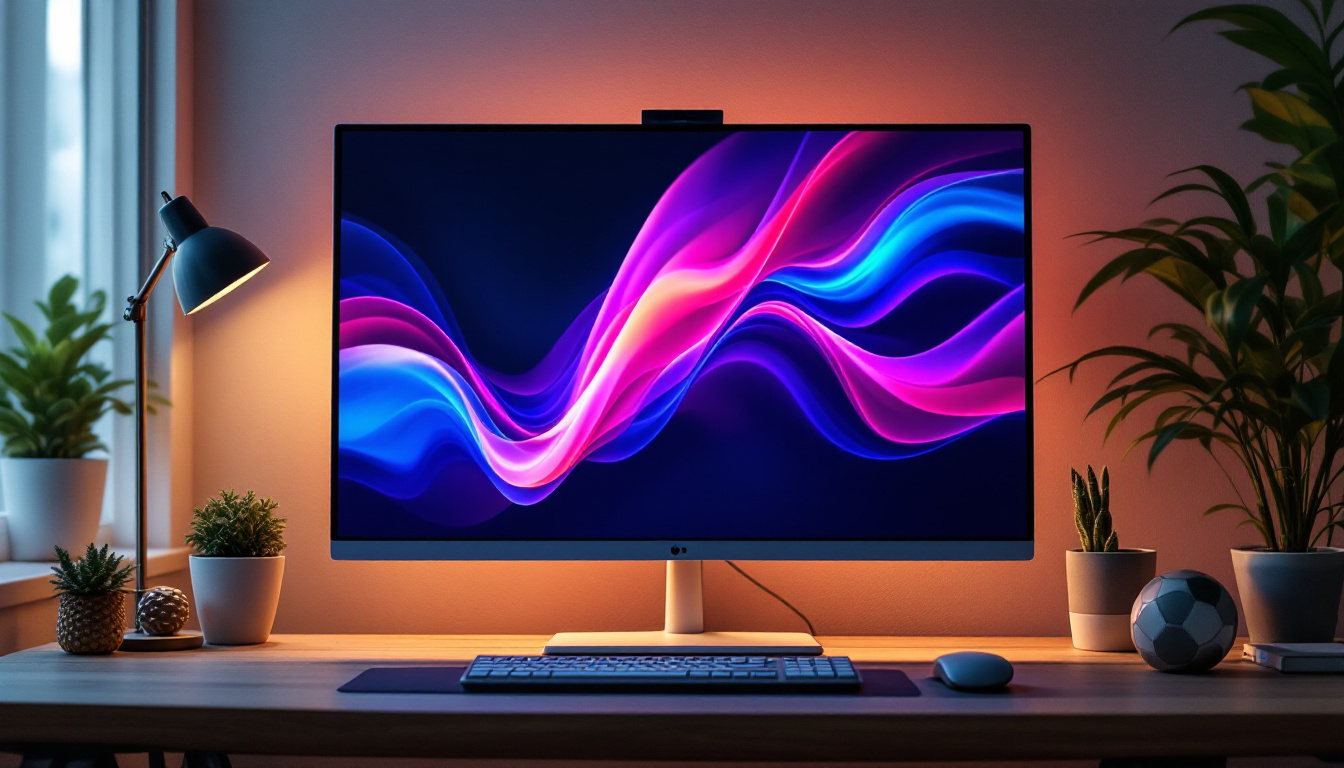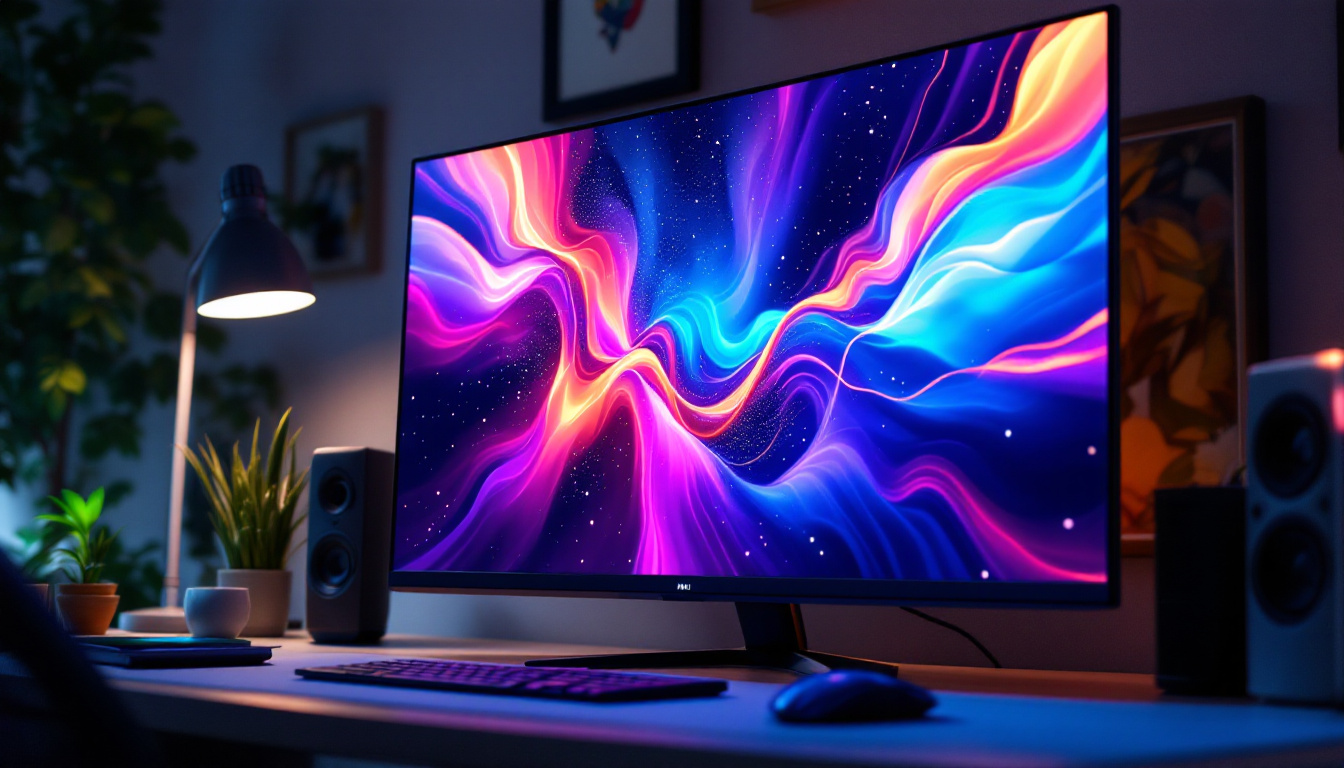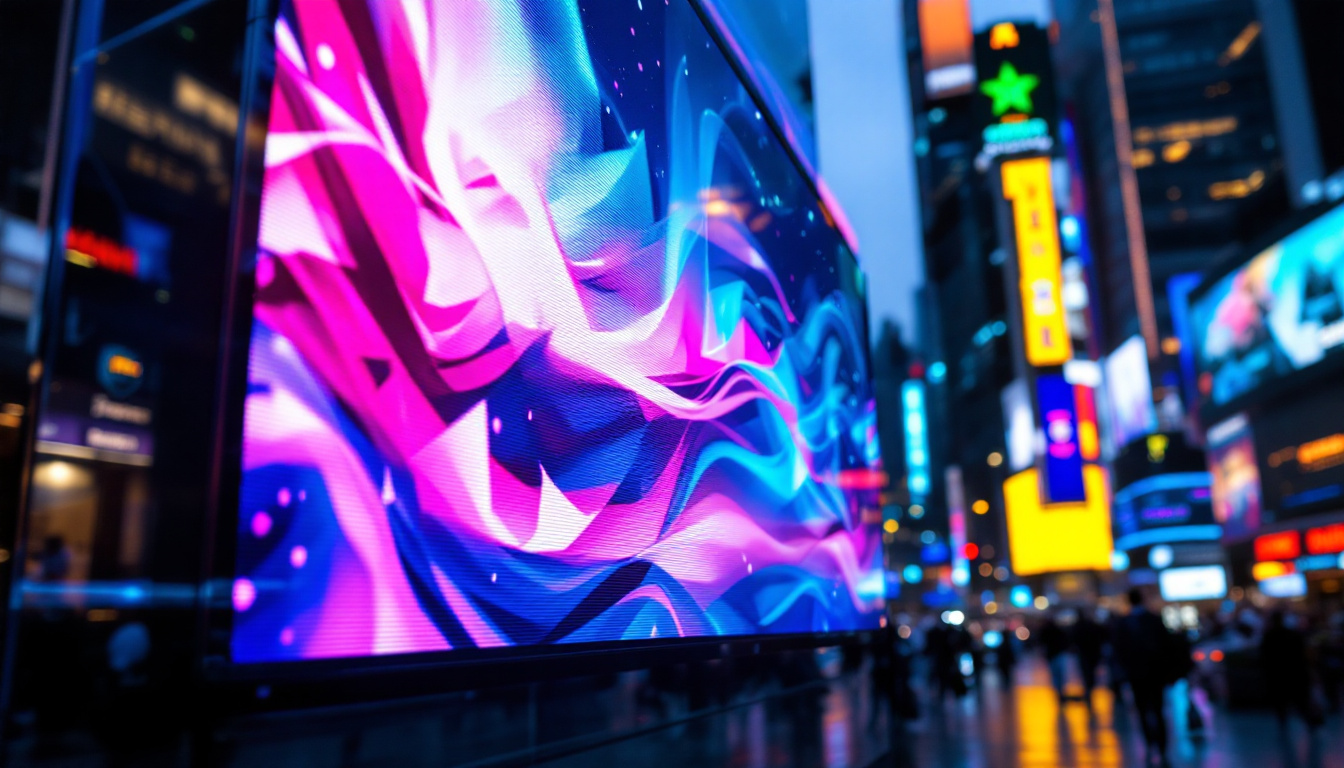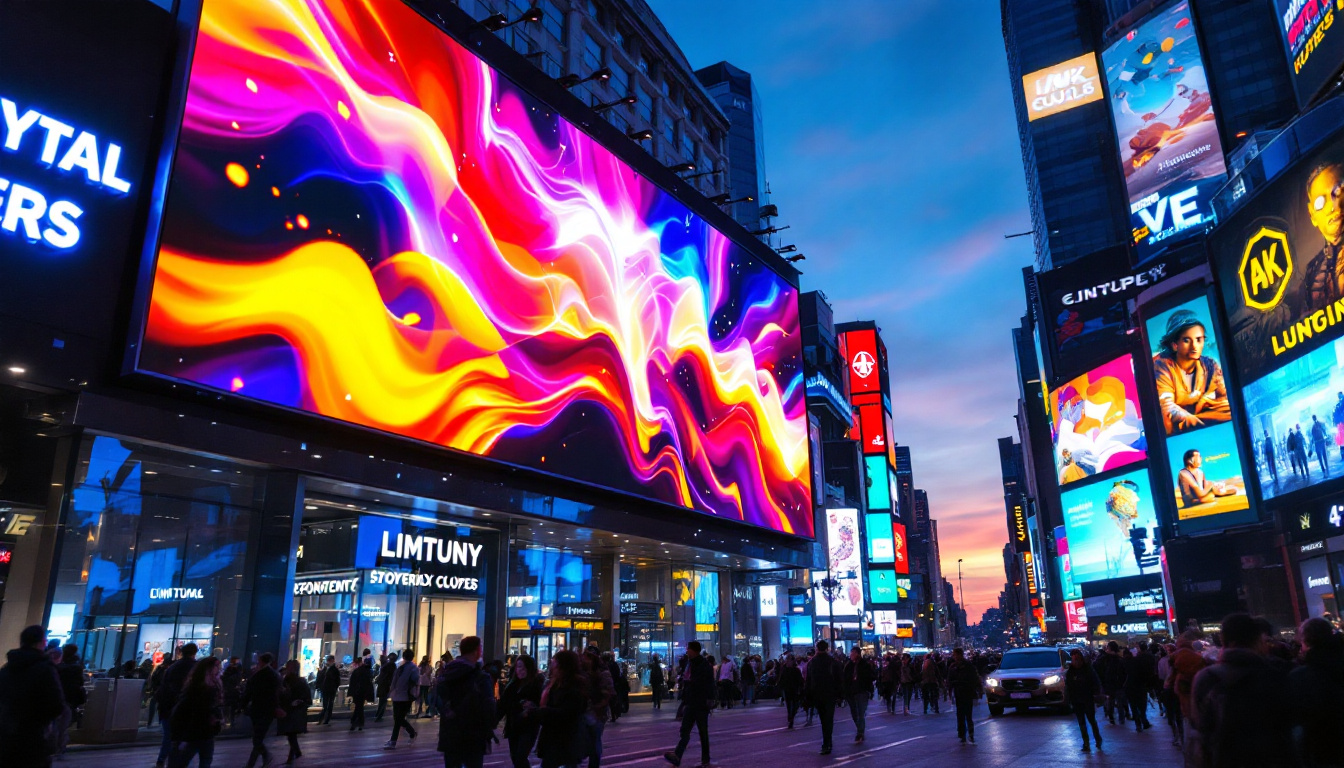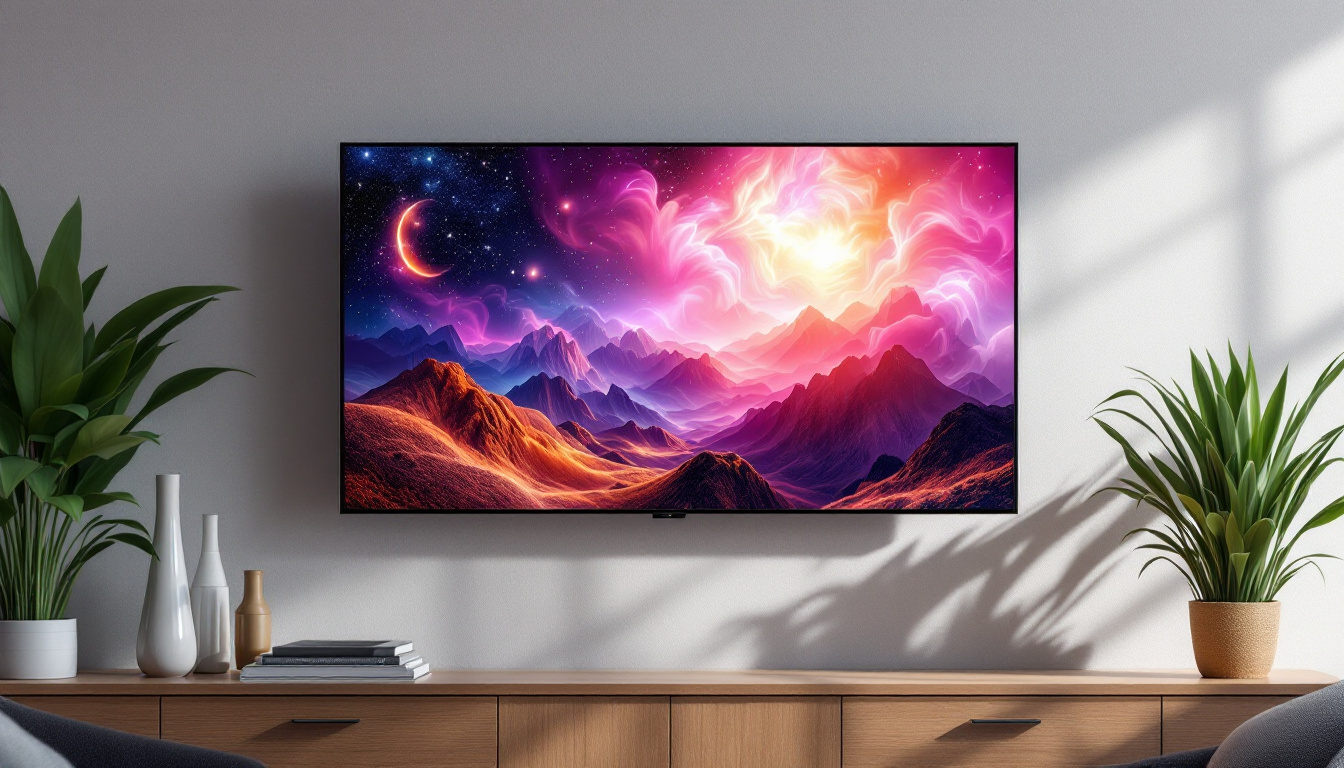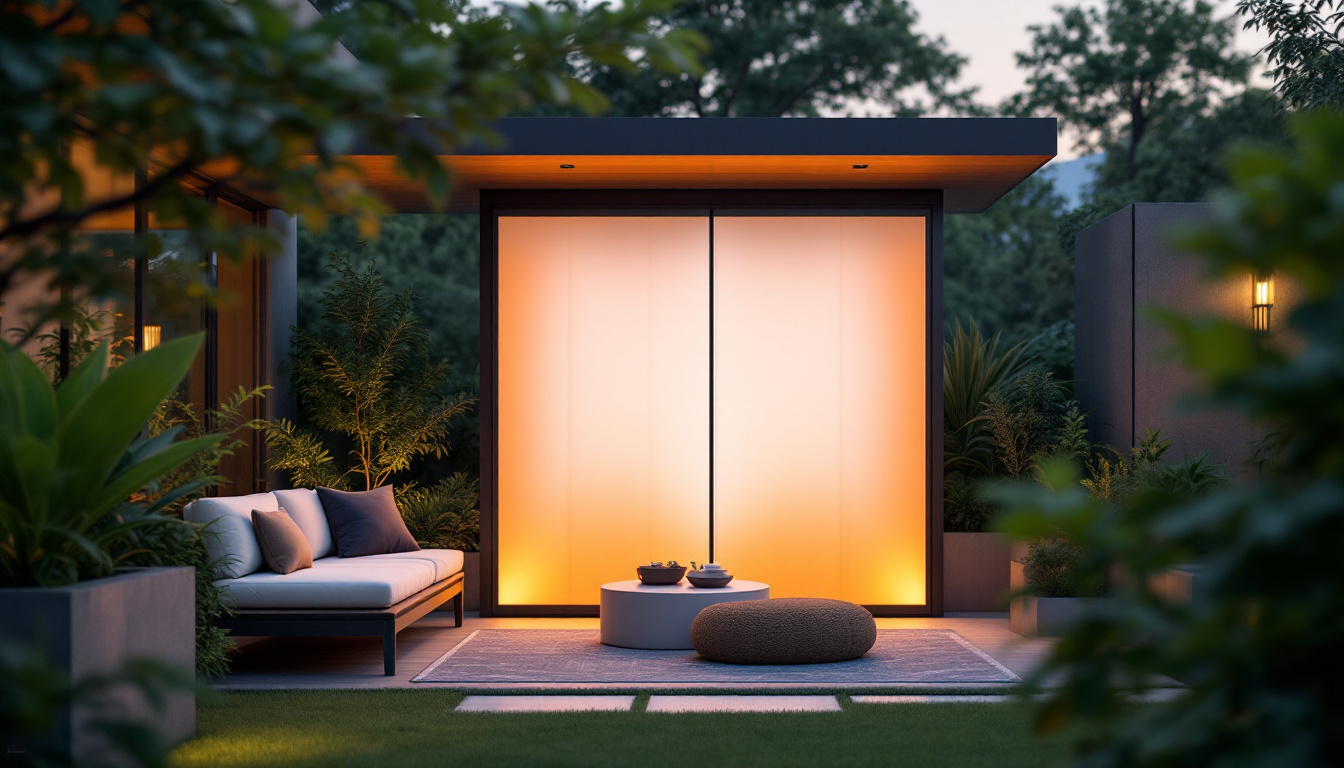In the ever-evolving world of technology, desktop monitors have become essential tools for both work and leisure. Among the various types of displays available, LED (Light Emitting Diode) technology has gained significant popularity due to its superior performance and energy efficiency. This article delves into the intricacies of LED displays, focusing on their features, benefits, and how they compare to other display technologies.
Understanding LED Displays
LED displays utilize a series of light-emitting diodes to create images on the screen. Unlike traditional LCD monitors that use fluorescent backlighting, LED monitors provide a more vibrant and dynamic visual experience. The technology behind LED displays has advanced considerably, allowing for thinner designs and improved color accuracy. This evolution has not only enhanced the aesthetic appeal of screens but has also made them more energy-efficient, reducing the overall power consumption compared to older technologies.
The Basics of LED Technology
At the core of LED technology is the diode, a semiconductor device that emits light when an electric current passes through it. In LED monitors, these diodes can be arranged in various configurations, including edge-lit and full-array setups. Edge-lit displays feature LEDs along the edges of the screen, while full-array displays have a grid of LEDs behind the panel, offering better contrast and brightness control. This fundamental difference in design impacts the overall performance of the monitor, influencing factors such as color reproduction, brightness levels, and viewing angles. Full-array LED displays generally provide superior image quality, making them a preferred choice for professional applications.
Moreover, advancements in LED technology have led to the development of features like local dimming, which allows specific areas of the screen to be dimmed or brightened independently. This capability enhances the viewing experience by providing deeper blacks and more vivid colors, especially in scenes with high contrast. As a result, users can enjoy a more immersive experience when watching movies or playing video games, where visual detail is paramount.
Types of LED Displays
LED displays can be categorized into several types, each serving different purposes and preferences. The most common types include:
- Standard LED: This type uses traditional LED technology for backlighting and is suitable for general use.
- OLED (Organic LED): OLED displays offer deeper blacks and more vibrant colors by using organic compounds that emit light. They are often favored for high-end applications.
- Mini-LED: A newer technology that utilizes smaller LEDs for backlighting, Mini-LED displays provide improved contrast and brightness control, making them ideal for HDR content.
Understanding these types can help users make informed decisions based on their specific needs, whether for gaming, graphic design, or everyday tasks. Additionally, there are emerging technologies like MicroLED, which promise even greater efficiency and flexibility by allowing for modular display configurations. This innovation could revolutionize the way we think about screen size and resolution, enabling users to create custom display setups that fit their unique environments and preferences.
Furthermore, the versatility of LED displays extends beyond just televisions and computer monitors; they are also widely used in digital signage, advertising, and even in the automotive industry for dashboard displays. The ability to produce bright, clear images in various lighting conditions makes LED technology an ideal choice for outdoor applications, where visibility is crucial. As the demand for high-quality visual experiences continues to grow, the evolution of LED technology will likely lead to even more exciting developments in the near future.
Benefits of LED Displays
LED displays come with a myriad of advantages that set them apart from traditional LCD and CRT monitors. These benefits make them a popular choice among consumers and professionals alike.
Energy Efficiency
One of the most significant advantages of LED displays is their energy efficiency. LED technology consumes less power compared to traditional displays, which not only reduces electricity bills but also contributes to a lower carbon footprint. This efficiency is particularly beneficial for businesses looking to minimize operational costs while maintaining high-quality visual output. Furthermore, many LED displays are equipped with features such as automatic brightness adjustment, which optimizes power consumption based on ambient light conditions, further enhancing their energy-saving capabilities.
Enhanced Image Quality
LED displays are renowned for their superior image quality. With higher brightness levels, better contrast ratios, and a wider color gamut, these monitors deliver stunning visuals that enhance the viewing experience. Whether for gaming, watching movies, or professional graphic design, the clarity and vibrancy of LED displays are often unmatched. Additionally, advancements in LED technology, such as HDR (High Dynamic Range), allow for even greater detail in both bright and dark scenes, making the images more lifelike and immersive. This is especially important for creative professionals who rely on accurate color representation for their work.
Longevity and Durability
LED monitors typically have a longer lifespan compared to their LCD counterparts. The solid-state nature of LEDs means they are less prone to burn-in and other issues that can affect display longevity. This durability makes LED displays a wise investment for both personal and professional use, as they require less frequent replacement. Moreover, many LED displays are designed to withstand harsher conditions, making them suitable for outdoor use or in environments where traditional displays might fail. This resilience not only extends their usability but also enhances their value over time, as users can rely on them for consistent performance without the worry of rapid degradation.
Versatility in Applications
Another noteworthy benefit of LED displays is their versatility in various applications. From large-scale outdoor billboards to compact monitors for personal computers, LED technology can be adapted to meet diverse needs. In retail environments, for instance, LED displays can be used for dynamic advertising, drawing attention with vibrant colors and motion graphics. In educational settings, they serve as interactive learning tools that can engage students more effectively than traditional whiteboards. This adaptability makes LED displays an ideal choice for a wide range of industries, including entertainment, education, and corporate environments.
Environmental Impact
In addition to their energy efficiency, LED displays are often constructed with environmentally friendly materials. Many manufacturers are committed to reducing the environmental impact of their products by using recyclable components and minimizing hazardous substances. This commitment to sustainability not only appeals to eco-conscious consumers but also aligns with global efforts to promote greener technologies. As more individuals and organizations prioritize environmental responsibility, the demand for LED displays continues to grow, further solidifying their place as a leading choice in modern display technology.
Comparing LED Displays with Other Technologies
While LED displays offer numerous advantages, it is essential to compare them with other display technologies to understand their unique position in the market. The most common alternatives include LCD and CRT displays.
LED vs. LCD
Although both LED and LCD monitors utilize liquid crystal technology, the primary difference lies in the backlighting method. LED monitors use diodes for illumination, while traditional LCDs rely on fluorescent backlighting. This distinction leads to notable differences in performance:
- Brightness: LED displays generally offer higher brightness levels, making them more suitable for well-lit environments.
- Color Accuracy: LED monitors provide better color reproduction, enhancing the overall visual experience.
- Thickness: LED technology allows for thinner designs, making them more aesthetically pleasing and easier to integrate into modern workspaces.
LED vs. CRT
CRT (Cathode Ray Tube) monitors were once the standard for desktop displays but have largely been phased out in favor of more advanced technologies. The differences between LED and CRT are stark:
- Size and Weight: CRT monitors are bulky and heavy, while LED displays are lightweight and slim, making them easier to transport and mount.
- Image Quality: LED displays offer higher resolutions and better color accuracy compared to CRTs, which can suffer from distortion and flickering.
- Energy Consumption: LED monitors consume significantly less power than CRTs, making them more environmentally friendly.
Choosing the Right LED Monitor
With the variety of LED monitors available on the market, selecting the right one can be a daunting task. Several factors should be considered to ensure the chosen monitor meets specific needs and preferences.
Screen Size and Resolution
The screen size and resolution are critical factors that influence the overall viewing experience. Larger screens provide more immersive experiences, while higher resolutions, such as 4K, offer sharper images. Users should consider their workspace and intended use when selecting the appropriate size and resolution.
Refresh Rate and Response Time
For gamers and professionals who require smooth visuals, the refresh rate and response time are essential specifications. A higher refresh rate (measured in Hertz) results in smoother motion, while a lower response time minimizes motion blur. For gaming, a refresh rate of at least 144Hz is recommended, while general use may only require 60Hz.
Connectivity Options
Modern LED monitors come equipped with various connectivity options, including HDMI, DisplayPort, and USB-C. Ensuring compatibility with existing devices is crucial for a seamless user experience. Additionally, some monitors offer built-in USB hubs, enhancing convenience for connecting peripherals.
Setting Up Your LED Monitor
Once the right LED monitor has been selected, proper setup is essential for optimal performance. This involves adjusting settings and positioning the monitor for comfort and efficiency.
Positioning the Monitor
The positioning of the monitor can significantly impact ergonomics and viewing comfort. Ideally, the top of the screen should be at or just below eye level, and the monitor should be about an arm’s length away. This setup helps reduce eye strain and promotes better posture.
Calibrating Display Settings
Calibrating the display settings is crucial for achieving the best image quality. Adjusting brightness, contrast, and color settings can enhance the viewing experience and ensure accurate color representation. Many monitors come with preset modes for different activities, such as gaming or photo editing, which can be utilized for convenience.
Utilizing Additional Features
Many LED monitors come with additional features such as blue light filters, flicker-free technology, and built-in speakers. Utilizing these features can enhance comfort and usability, making the monitor more versatile for various tasks.
Conclusion
LED displays have revolutionized the way users interact with technology, offering superior image quality, energy efficiency, and longevity. Understanding the different types of LED displays, their benefits, and how they compare to other technologies can help consumers make informed decisions when selecting a monitor.
As technology continues to advance, LED monitors are likely to remain at the forefront of display innovation, catering to the diverse needs of users across various industries. Whether for professional use, gaming, or casual browsing, LED displays provide a compelling visual experience that enhances productivity and enjoyment.
Discover LumenMatrix’s Advanced LED Display Solutions
Ready to elevate your visual experience with the latest in LED display technology? Look no further than LumenMatrix, a pioneer in crafting cutting-edge LED displays that bring your content to life. Whether you’re in need of an Indoor LED Wall Display for your business, an Outdoor LED Wall Display for advertising, or any of our specialized solutions like Vehicle LED Displays and Custom LED Displays, LumenMatrix has the perfect solution to meet your needs. Experience the future of visual communication and transform your space with our captivating and energy-efficient LED display modules. Check out LumenMatrix LED Display Solutions today and see the difference for yourself!


